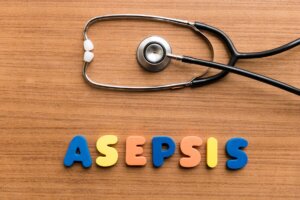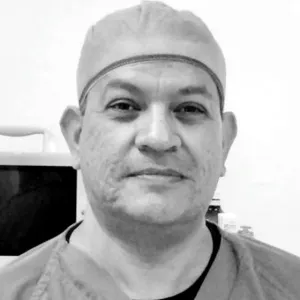Aseptic Technique - Purpose and Benefits


Written and verified by the doctor Nelton Abdon Ramos Rojas
The aseptic technique is a set of measures that reduce the risk of infection in both patients and medical personnel. In addition, these measures reduce the possibility of infection or contamination of an area or clinical instruments.
As you can see, they’re part of the prevention against the entry of foreign microorganisms into our bodies. They protect both the patients receiving medication and the professionals who work in such a hospital environment.
To carry out this indispensable method, the medical team must have prior knowledge and skills. You have to take into account the hygiene and biosecurity standards that are used normally.
Types of infection according to their characteristics

Aseptic techniques aim to minimize the development of nosocomial infections. Thus, the quality of a patient’s treatment improves. Also, it guarantees both their safety and that of the medical team inside a given specialized center.
It also protects the closest community since the alteration could spread during invasive processes such as surgical interventions. In them, the group of specialists is in direct contact with a patient’s infected tissues.
Currently, we can classify infections based on different factors. For instance, there are endogenous and exogenous infections.
Thus, you can distinguish these according to whether the problem microorganism comes from the internal or external environment. There are also other classification criteria depending on the type of microorganism, the means of transmission, and whether it’s an infection in outpatients or inpatients.
Read more: Airway Management in Obese Patients
Different types of aseptic technique
Currently, there’s a group of specialists developing a series of guidelines for handling medical instruments. These are indispensable during other situations in inpatient treatment. In addition, they need to prevent the spread of infections such as isolation.
Often the group of specialists must work with sterile materials. These are usually wrapped in a non-sterile layer and in continuous contact with the external environment. Therefore, the medical team must take special care when dealing with this class of materials in order to avoid contamination.
Some tips to keep in mind are unwrapping the package carefully so that the outer layer doesn’t touch the sterile material.
Likewise, they must handle these instruments with sterile gloves at all times. They should also avoid contact with this material or with another material contaminated or exposed to adverse environmental conditions. Other important measures are trying not to sneeze, or talking through the material to avoid contamination as much as possible.

Hand washing
Within the usual hygiene rules, it’s important to observe proper handwashing measures. As a general rule, you must do it before and after contact with a patient. Thus, you must do it before any other medical procedure and after its completion.
Similarly, you must review the conditions of any medical compound or clinical instruments before using them. In the case of medications, check their expiration date, conditions, and proper conservation instructions.
Also, you must only use a material that’s been sterilized within the last 8 days. In addition, your package must be intact to ensure it isn’t contaminated.
You may be interested: Intraosseous Infusion – Post Procedure Care
Don’t use the product if the packaging isn’t intact. Likewise, store it in a clean environment, with a low level of humidity, and with limited contact with other possible sources of contamination.
If you must use a mask when treating a patient, you must wear it for less than two hours straight. After this period of time, the instrument loses much of its effectiveness.
Finally, pay attention to its proper placement and avoid touching. Replace it if it moves to the base of your neck.
All cited sources were thoroughly reviewed by our team to ensure their quality, reliability, currency, and validity. The bibliography of this article was considered reliable and of academic or scientific accuracy.
- Instrumentación Científico Técnica. (2010). Manual Básico de Microbiología. Cultimed. https://doi.org/10.2146/ajhp150235
- Alcance de la Norma, I. (2005). Norma técnica sobre esterilización y desinfección de alto nivel para establecimientos de atención en salud. Anon Weber & Rutala Weber & Rutala Gastmeier & Vonberg Machida et Al.
- Hoogstraten-Miller, S. L., & Brown, P. A. (2008). Techniques in aseptic rodent surgery. Current Protocols in Immunology. https://doi.org/10.1002/0471142735.im0112s82
This text is provided for informational purposes only and does not replace consultation with a professional. If in doubt, consult your specialist.








